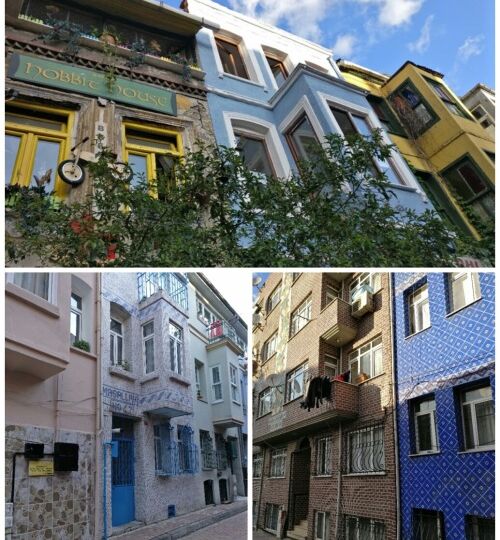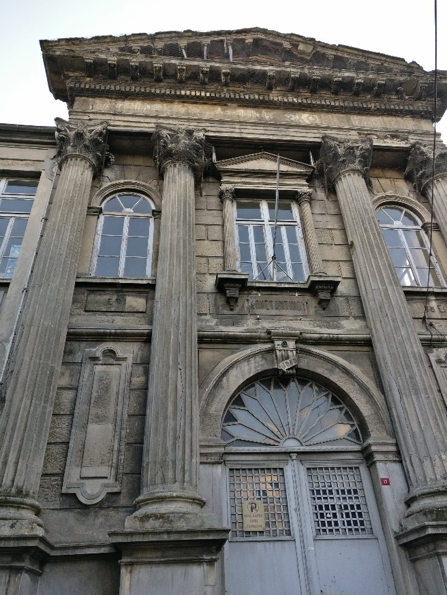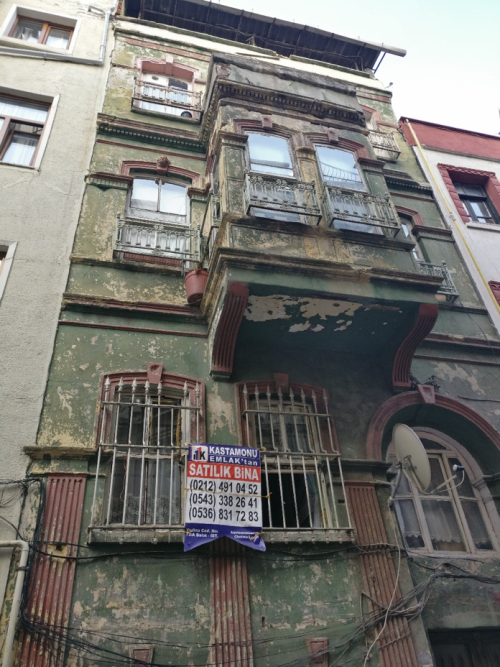
Living on Istiklal Caddesi is an odd experience. Even leaving aside the ubiquitous sounds of construction—and parties—it’s just not much of a neighborhood.
At one point, it probably was, but we have to go elsewhere for the amenities of normal life – groceries, the gym, cafes that aren’t mobbed, streets you can actually walk down. That’s not necessarily a bad thing—there are many benefits to living here. Personally, anyway, I’ve never lived in such a central, connected, or exciting part of a city. Still, it can be nice sometimes to get out of Beyoğlu and explore parts of Istanbul which are calmer, and which still have the feel of a neighborhood.
This weekend, I explored Fener and Balat, the old Jewish and Armenian / Greek Orthodox quarters of the city, about two miles up the Golden Horn from Eminönü. According to the Guardian, Balat has been the city’s Jewish quarter since the Byzantine period, while Fener was host to the Greek Orthodox community for even longer—the Fener Rum Lisesi, now housed in an imposing brick building a big up the hill, was founded in the fifteenth century. Both neighborhoods grew somewhat dilapidated during the second half of the twentieth century. Unsurprisingly, though—given that it’s being written up in the Guardian—Fener-Balat is beginning to gentrify. In 2003, the European Union began a restoration and revitalization program in the neighborhood. Many of the Ottoman houses now bear plaques testifying to the EU’s involvement.
Even the houses which remain unrenovated are beautiful. The facades are painted in bright colors, or covered in patterned tiles, and the houses all have window-balconies overhanging the street.

Some of the streets are color-coordinated while others are eclectic.

There are coffee shops on almost every corner, as well as cafes selling Turkish breakfast and some of the best pide I’ve ever tasted!

On Saturday there were at least two antique shops running small-stakes auctions, with participants overflowing into the streets. Further down the block were artists’ spaces and eclectic antique-store-cafes. But go just a little bit up the hill and the commercial buzz died down, with the loudest sound left the children playing in the street. A few blocks to the left, and you encounter a huge neoclassical building—an unused Greek high school.

Turn left again and go a few more blocks and you’re in the park by the Golden Horn— a few couples sitting on benches, children playing, and old men fishing. The Haliç line of the municipal ferries stops in Fener, providing relatively easy (and traffic-free!) access to Karaköy, Üsküdar, most importantly for me, the Ottoman archives.
Perhaps most miraculously of all, the traffic in Fener-Balat is so minimal that I was repeatedly able to stand in the middle of the street, gawking and searching for the best angle to take a photo! I’m not sure you could say as much about anywhere else in Istanbul.

Many of the buildings were marked “satılık (on sale),” so if ANAMED ever needs to expand, register my vote now for Fener-Balat.

